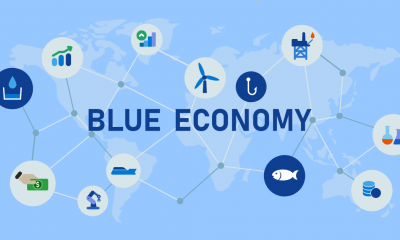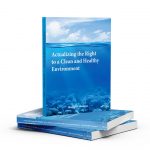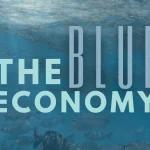By Hon. Prof. Kariuki Muigua, OGW, PhD, C.Arb, FCIArb is a Professor of Environmental Law and Dispute Resolution at the University of Nairobi, Member of Permanent Court of Arbitration, Leading Environmental Law Scholar, Respected Sustainable Development Policy Advisor, Top Natural Resources Lawyer, Highly-Regarded Dispute Resolution Expert and Awardee of the Order of Grand Warrior (OGW) of Kenya by H.E. the President of Republic of Kenya. He is The African ADR Practitioner of the Year 2022, The African Arbitrator of the Year 2022, ADR Practitioner of the Year in Kenya 2021, CIArb (Kenya) Lifetime Achievement Award 2021 and ADR Publisher of the Year 2021 and Author of the Kenya’s First ESG Book: Embracing Environmental Social and Governance (ESG) tenets for Sustainable Development” (Glenwood, Nairobi, July 2023) and Kenya’s First Two Climate Change Law Book: Combating Climate Change for Sustainability (Glenwood, Nairobi, October 2023), Achieving Climate Justice for Development (Glenwood, Nairobi, October 2023) and Promoting Rule of Law for Sustainable Development (Glenwood, Nairobi, January 2024)*
Sustainable Development Goal (SDG) 3 identifies key measures that are vital in fostering the right to health and achieving good health and wellbeing for all. These include reducing the global maternal mortality ratio to less than 70 per 100,000 live births; ending preventable deaths of newborns and children under 5 years of age, with all countries aiming to reduce neonatal mortality to at least as low as 12 per 1,000 live births and under-5 mortality to at least as low as 25 per 1,000 live births; ending the epidemics of AIDS, tuberculosis, malaria and neglected tropical diseases and combating hepatitis, water-borne diseases and other communicable diseases; reducing by one third premature mortality from noncommunicable diseases through prevention and treatment and promoting mental health and well-being; strengthening the prevention and treatment of substance abuse, including narcotic drug abuse and harmful use of alcohol; reducing global deaths and injuries from road traffic accidents.
Further it urges states to ensure universal access to sexual and reproductive health-care services, including for family planning, information and education, and the integration of reproductive health into national strategies and programmes; achieve universal health coverage, including financial risk protection, access to quality essential health-care services and access to safe, effective, quality and affordable essential medicines and vaccines for all; substantially reduce the number of deaths and illnesses from hazardous chemicals and air, water and soil pollution and contamination; support the research and development of vaccines and medicines for the communicable and noncommunicable diseases that primarily affect developing countries; substantially increase health financing and the recruitment, development, training and retention of the health workforce in developing countries; and strengthen the capacity of all countries, in particular developing countries, for early warning, risk reduction and management of national and global health risks.
The United Nations observes that there has been global progress towards meeting some of the targets of SDG 3 towards achieving good health and wellbeing for all81. It notes that 146 out of 200 countries have already met or are on the track to meet the under-5 mortality target; effective HIV treatment has cut global AIDS-related deaths by 52% since 2010 and at least one neglected tropical disease has been eliminated in 47 countries. The UNDP further notes that the world has made great progress against several leading causes of death and disease; life expectancy has increased dramatically; infant and maternal mortality rates have declined; and that AIDS and malaria related deaths have declined.
The Sustainable Development Goals Report also indicates that gains are evident in many areas of health, including reproductive, maternal and child health, immunization coverage and treatment of communicable diseases, though progress is marred by huge regional disparities. Progress towards achieving good health and well-being is also evident in some countries including Kenya. A report by the State Department for Economic Planning on the progress made towards achievement of SDG 3 shows that Kenya has made some significant progress in key areas including skilled deliveries at health facilities, improvement in antenatal care coverage, improvement in child immunization coverage, decrease in health diseases and conditions including tuberculosis, malaria and HIV/AIDS, improvement in health infrastructure, increased financing of healthcare and increase in health insurance coverage due to the government policy on Universal Healthcare Coverage.
Further, it has been noted that Kenya has made some progress and key reforms towards achieving Universal Health Care including free maternity services in all public health facilities; free primary health care in all public primary healthcare facilities; equipment of major public hospitals across the country with modern diagnostic equipment; adoption of health insurance subsidies through NHIF targeting disadvantaged groups; and the provision of infrastructure and equipment to health facilities across county governments such as new wards, ambulances, and additional health workers among other initiatives. However, despite this progress, several challenges at the global, regional and national level continue to impede realization of the right to health and achievement of SDG 3 on good health and well-being for all. It has been reported that the outbreak of the COVID-19 pandemic posed and continues to pose challenges to people’s health and wellbeing globally and is impeding progress in meeting SDG 3 targets.
Before the pandemic, notable gains were evident in many areas of health across the globe, including reproductive, maternal and child health, immunization coverage and treatment of communicable diseases, though progress was marred by huge regional disparities. However, the outbreak of the pandemic severely disrupted essential health services across the world, triggered an increase in the prevalence of anxiety and depression, lowered global life expectancy, derailed progress towards ending HIV, tuberculosis and malaria, and halted two decades of work towards making health coverage universal.
Further, it has been pointed out that developing countries continue to face challenges in achieving good health and well-being for all due to economic hardships. Achieving the targets of SDG 3 requires significant resources to be invested in infrastructure, facilities, personnel and research and development which may be out of reach for developing countries. As a result, the health sector in some countries continues to face challenges including underequipped health facilities; inability of the infrastructure in place to meet existing demands; and inadequate human resource, thereby limiting the ability of citizens to access quality and affordable health care services, among others. Further, incidences of poverty in some countries hinder the realization of SDG 3 by limiting the ability of people to access health services. It has been pointed out that as a result of poverty, children growing up in socioeconomically disadvantaged neighborhoods face greater direct physical challenges to health status and health-promoting behaviours; they also often experience emotional and psychological stressors, such as family conflict and instability arising from chronically inadequate resources.
Achieving good health and well-being for all continues to be a challenge especially for women. It has been pointed out that women and men have different health-care needs, but an equal right to live healthily. However, for many women and girls, gender discrimination systematically undermines their access to health care, for reasons that include fewer financial resources and constraints on mobility among others. This is compounded by additional burdens imposed by gender disparities which limit their ability to stay healthy including long hours spent on domestic work, unsafe work environments and gender-based violence, with mechanisms for prevention and protection often being inadequate. Women face peculiar health concerns as a result of pregnancy and child birth which need to be met in order to foster their good health and well-being.
Finally, environmental challenges including climate change, degradation and pollution continue to pose a risk to the right to health around the world. UNDP posits that climate change and environmental degradation have potentially serious implications for social and economic development, including health. It observes that health systems in many countries are highly vulnerable to the shocks caused by epidemic outbreaks, conflict and climate events1. Further climate change could result in poverty a situation that may hinder the ability of people to access health services and further increases susceptibility to health risks including malaria and diarrhea due to global warming. It can also result in water scarcity undermining the ability of people to access clean water and sanitation which is vital in achieving good health and well-being.
Environmental degradation as a result of air and water pollution as well as poor management of hazardous chemicals and waste can undermine good health and well-being and result in health hazards and diseases. In addition, natural disasters and environmental shocks can have substantial impact on health, including deaths, injuries, diseases, disabilities, psychosocial problems and other indirect effects with damage to health facilities and disruption to the delivery of health services over extended periods of time. It is therefore vital to combat climate change and foster the right to a clean and healthy environment in order to achieve good health and well-being for all.
*This is an extract from the Book: Promoting Rule of Law for Sustainable Development (Glenwood, Nairobi, January 2024) by Hon. Prof. Kariuki Muigua, OGW, PhD, Professor of Environmental Law and Dispute Resolution, Senior Advocate of Kenya, Chartered Arbitrator, Kenya’s ADR Practitioner of the Year 2021 (Nairobi Legal Awards), ADR Lifetime Achievement Award 2021 (CIArb Kenya), African Arbitrator of the Year 2022, Africa ADR Practitioner of the Year 2022, Member of National Environment Tribunal (NET) Emeritus (2017 to 2023) and Member of Permanent Court of Arbitration nominated by Republic of Kenya. Prof. Kariuki Muigua is a foremost Environmental Law and Natural Resources Lawyer and Scholar, Sustainable Development Advocate and Conflict Management Expert in Kenya. Prof. Kariuki Muigua teaches Environmental Law and Dispute resolution at the University of Nairobi School of Law, The Center for Advanced Studies in Environmental Law and Policy (CASELAP) and Wangari Maathai Institute for Peace and Environmental Studies. He has published numerous books and articles on Environmental Law, Environmental Justice Conflict Management, Alternative Dispute Resolution and Sustainable Development. Prof. Muigua is also a Chartered Arbitrator, an Accredited Mediator, the Managing Partner of Kariuki Muigua & Co. Advocates and Africa Trustee Emeritus of the Chartered Institute of Arbitrators 2019-2022. Prof. Muigua is a 2023 recipient of President of the Republic of Kenya Order of Grand Warrior (OGW) Award for his service to the Nation as a Distinguished Expert, Academic and Scholar in Dispute Resolution and recognized among the top 5 leading lawyers and dispute resolution experts in Band 1 in Kenya by the Chambers Global Guide 2024 and was listed in the Inaugural THE LAWYER AFRICA Litigation Hall of Fame 2023 as one of the Top 50 Most Distinguished Litigation Lawyers in Kenya and the Top Arbitrator in Kenya in 2023.
References
African Development Bank Group., ‘Strategy for Quality Health Infrastructure in Africa 2022-2030.’ Available at https://www.afdb.org/sites/default/files/documents/publications/strategy_for_q uality_health_infrastructure_in_africa_2022-2030.pdf (Accessed on 03/11/2023).
African Union., ‘Abuja Declaration on HIV/AIDS, Tuberculosis and other Related Infectious Diseases.’ Available at https://au.int/sites/default/files/pages/32894- file-2001-abuja-declaration.pdf (Accessed on 03/11/2023).
African Union., ‘African Charter on the Rights and Welfare of the Child.’ Available at https://au.int/sites/default/files/treaties/36804-treaty african_charter_on_rights_welfare_of_the_child.pdf (Accessed on 02/11/2023).
African Union., ‘Protocol to the African Charter on Human and Peoples’ Rights on the Rights of Women in Africa (Maputo Protocol).’ Available at https://au.int/sites/default/files/treaties/37077-treatycharter_on_rights_of_women_in_africa.pdf (Accessed on 02/11/2023).
African Union., ‘Protocol to the African Charter on Human and Peoples’ Rights on the Rights of Older Persons in Africa.’ Available at https://au.int/sites/default/files/pages/32900-fileprotocol_on_the_rights_of_older_persons_e.pdf (Accessed on 02/11/2023).
Amref Health Africa., ‘Universal Health Coverage (UHC).’ Available at https://amref.org/kenya/our-work/pillar-2-innovative-health-servicessolutions/universal-health-coverage/ (Accessed on 03/11/2023).
Constitution of Kenya, 2010., Government Printer, Nairobi
Constitution of the World Health Organization., Available at https://apps.who.int/gb/bd/PDF/bd47/EN/constitution-en.pdf (Accessed on 01/11/2023).
Government of Kenya., ‘Beyond the Conference: Kenya’s Progress Towards Affordable and Accessible Health Care.’ Available at https://vision2030.go.ke/beyond-the-conference-kenyas-progress-towardsaffordable-and-accessible-health-care/ (Accessed on 02/11/2023).
Kabene. S et al., ‘The Importance of Human Resources Management in Health Care: A Global Context.’ Human Resources for Health., Volume 4, No. 20 (2006).
Kenya Health Policy 2014-2030., Available at https://publications.universalhealth2030.org/uploads/kenya_health_policy_2014_t o_2030.pdf (Accessed on 02/11/2023).
Kenya Universal Health Coverage Policy 2020-2030., Available at http://guidelines.health.go.ke:8000/media/Kenya_Universal_Health_Coverage_Policy_2020_ _2030.pdf (Accessed on 02/11/2023).
Mallender. J., ‘Health Research and Development: An Overview.’ Available at https://www.economicsbydesign.com/health-research-and-development-anoverview/ (Accessed on 03/11/2023).
Muigua. K., ‘Ensuring Healthy Lives and Well-being for All Kenyans.’ Available at https://kmco.co.ke/wp-content/uploads/2020/12/Ensuring-Healthy-Lives-andWellbeing-for-All-Kenyans-Kariuki-Muigua-December-2020.pdf (Accessed on 03/11/2023).
Muigua. K., ‘Realizing the Right to a Clean, Healthy and Sustainable Environment.’ Available at https://kmco.co.ke/wp-content/uploads/2023/06/Realizing-the-Right-to-a-Clean-Healthy-and-Sustainable-Environment.pdf (Accessed on 02/11/2023).
Muigua.K., ‘Nurturing Our Environment for Sustainable Development.’ Glenwood Publishers Limited, 2016.
Munyua. A., & Olalere. N., ‘Public Financing for Health in Africa: 15% of an Elephant is not 15% of A Chicken.’ Available at https://www.un.org/africarenewal/magazine/october-2020/public-financinghealth-africa-when-15-elephant-not-15-chicken (Accessed on 03/11/2023).
Nampewo. Z., Mike. J., & Wolff. J., ‘Respecting, Protecting and Fulfilling the Human Right to Health.’ International Journal of Equity in Health, Volume 21, No. 36 (2022).
Office of the United Nations High Commissioner for Human Rights., ‘The Right to Health.’ Available at https://www.ohchr.org/sites/default/files/Documents/Publications/Factsheet31.pdf (Accessed on 01/11/2023).
Organization of African Unity (OAU), African Charter on Human and Peoples’ Rights (“Banjul Charter”), 27 June 1981, CAB/LEG/67/3 rev. 5, 21 I.L.M. 58 (1982).
State Department for Economic Planning., ‘Is Kenya on Track Towards Achievement of SDG 3? An analysis of Health Indicators in Kenya.’ Available at https://www.planning.go.ke/wp-content/uploads/2022/02/ UHC-REPORTammended-1.pdf (Accessed on 02/11/2023).
United Nations Committee on Economic, Social and Cultural Rights (CESCR), ‘General Comment No. 14: The Right to the Highest Attainable Standard of Health. ‘(Art. 12 of the Covenant), 11 August 2000, E/C.12/2000/4.
United Nations Development Programme., ‘Goal 3: Good Health and Well-Being.’ Available at https://www.undp.org/sustainable-development-goals/good-health (Accessed on 02/11/2023).
United Nations Development Programme., ‘UNDP Support to the Implementation of Sustainable Development Goal 3.’ Available at https://www.undp.org/sites/g/files/zskgke326/files/publications/SDG3%20Health.pdf (Accessed on 03/11/2023).
United Nations Environment Programme., ‘Goal 3: Good Health and Well-Being.’ Available at https://www.unep.org/explore-topics/sustainable-developmentgoals/why-do-sustainable-development-goals-matter/goal-3 (Accessed on 03/11/2023).
United Nations General Assembly, ‘Convention on the Elimination of All Forms of Discrimination against Women,’ 18 December 1979, A/RES/34/180.
United Nations General Assembly, ‘International Covenant on Economic, Social and Cultural Rights.’ 16 December 1966, A/RES/2200.
United Nations General Assembly., ‘Convention on the Rights of the Child,’ 20 November 1989, Available at https://www.ohchr.org/sites/default/files/Documents/ProfessionalInterest/crc.pdf (Accessed on 02/11/2023).
United Nations General Assembly., ‘Universal Declaration of Human Rights,’ 10 December 1948, 217 A (III).
United Nations Women., ‘SDG 3: Ensure Healthy Lives and Promote Well-Being for All at All Ages.’ Available at https://www.unwomen.org/en/news/infocus/women-and-the-sdgs/sdg-3-good-health-well-being (Accessed on 03/11/2023).
United Nations., ‘SDG 3: Ensure Healthy Lives and Promote Well-Being for All at All Ages.’ Available at https://sdgs.un.org/goals/goal3 (Accessed on 02/11/2023).
United Nations., ‘The Sustainable Development Goals Report: 2022.’ Available at https://unstats.un.org/sdgs/report/2022/The-Sustainable-Development-GoalsReport-2022.pdf (Accessed on 02/11/2023).
United Nations., ‘Transforming our World: the 2030 Agenda for Sustainable Development.’ Available at https://sustainabledevelopment.un.org/content/documents/21252030%20Agenda %20for%20Sustainable%20Development%20web.pdf (Accessed on 01/11/2023).
United Nations., ‘Universal Declaration of Human Rights.’ Available at https://www.un.org/en/about-us/universal-declaration-of-human-rights (Accessed on 02/11/2023).
World Bank., ‘Measuring Progress in SDGs.’ Available at https://thedocs.worldbank.org/en/doc/2746916 05003514448- 0050022020/original/12ISSMEASURINGPROGRESSINSDG3HEALTH.pdf (Accessed on 03/11/2023).
World Health Organization., ‘10 Global Health Issues to Track in 2021.’ Available at https://www.who.int/news-room/spotlight/10-global-health-issues-to-track-in2021 (Accessed on 03/11/2023).
World Health Organization., ‘Health Financing.’ Available at https://www.who.int/health-topics/health-financing#tab=tab_1 (Accessed on 03/11/2023).
World Health Organization., ‘Universal Health Coverage (UHC).’ Available at https://www.who.int/news-room/fact-sheets/detail/universal-health-coverage- (uhc) (Accessed on 03/11/2023).





 Lawyers1 year ago
Lawyers1 year ago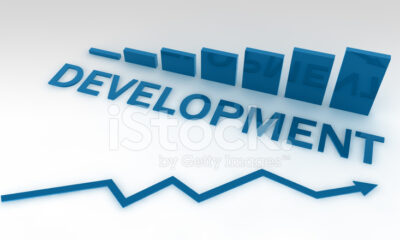
 News & Analysis3 years ago
News & Analysis3 years ago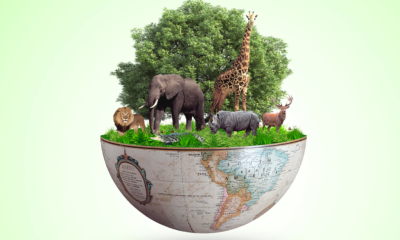
 News & Analysis3 years ago
News & Analysis3 years ago
 Lawyers1 year ago
Lawyers1 year ago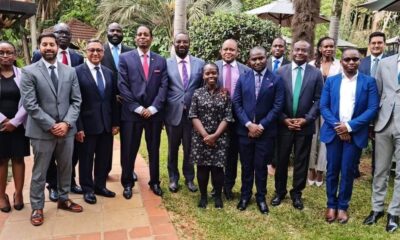
 News & Analysis2 years ago
News & Analysis2 years ago
 News & Analysis1 year ago
News & Analysis1 year ago
 News & Analysis3 years ago
News & Analysis3 years ago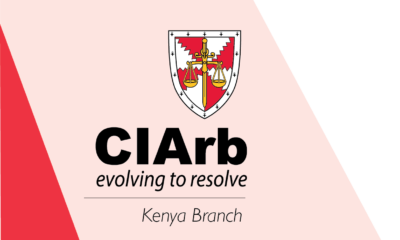
 News & Analysis1 year ago
News & Analysis1 year ago













